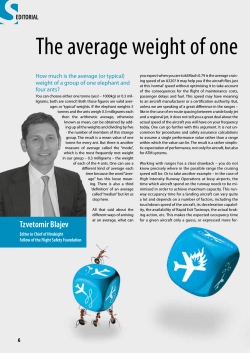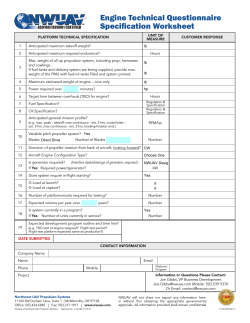
Aircraft Velocity and Runway Operations Lance Sherry SYST 460
Aircraft Velocity and Runway Operations Lance Sherry SYST 460 Takeoff • Manuever from static condition to: – 1500 feet above field elevation – altitude at which transition to enroute configuration is completed Runway Length Calculation • • Airplane must generate enough speed to produce Lift Accleration takes place with limited length of runway – • • • • • • • Point D, no engine failures results in liftoff speed Point E, all engines, aircraft reaches safe speed V2 • Point F, engine failure occurs beyond Point A. making it impossible to stop aircraft on remaining runway Point G, aircraft operating with one engine reaches safe speed V2 at 35 ft. • D V2 Need stopping distance if anything goes wrong Below V1 takeoff safely aborted Above V1, takeoff must continue Point A- B-C-H (last possible trajectory to stop on runway Point A, engine failure and thrust spools down Point B crew recognizes problem and start stopping by retarding throttles Point C brakes are applied and spoilers deployed Point H, aircraft comes to complete stop • • Velocity V1 A E G F B C H Distance Balanced Field Condition (BFC) :distance required to stop after engine failure = distance travelled to reach V2 at 35ft Takeoff Speed Profile • • • • • • • • • V1 – airspeed beyond which no stopping action be initiated: Decision speed VR – airspeed at which rotation is initiated during takeoff to obtain V2 VMU – minumum unstick speed = airspeed at which aircraft can be made to lift-off and continue to perform takeoff VLOF airspeed when aircraft becomes airborne VS – stall speed of airplane V2 target airspeed for 35 feet above runway elevation to achieve climb gradient for airborne takeoff V1 < V R 1.1 VMU < VLOF 1.2 VS < V2 V2 35 ft V1 VR VMU VLOF
© Copyright 2025





















